- Joined
- 19 July 2016
- Messages
- 4,275
- Reaction score
- 3,460
Thanks for posting those but I cannot make a thing out detail wise.
From Global Security:
In 1979 the Navy proposed reactivating the Iowa Class under a two-phase program. Under Phase I the battleships would be brought back into service quickly with a minimum of new modifications. This was done, and all four ships rejoined the fleet. The initial plan also envisioned a Phase II, under which the aft turret was to be deleted and a hanger and flight deck added in its place. The hanger would accommodate 12 AV-8B Harrier STOVL jumpjets. The Martin Marietta version for Phase II had a V-shaped flight deck with two ski jumps on the forward edges, on either side of the main superstructure. The flight decks would measure 330 feet by 150 feet. However, by 1984 the plans for these "Battlecarriers" had been dropped.
Line drawing of Iowa-class aviation conversion circa 1981.
Sources:
http://www.globalsecurity.org/military/systems/ship/bb-61-av.htm
Proceedings July 1981

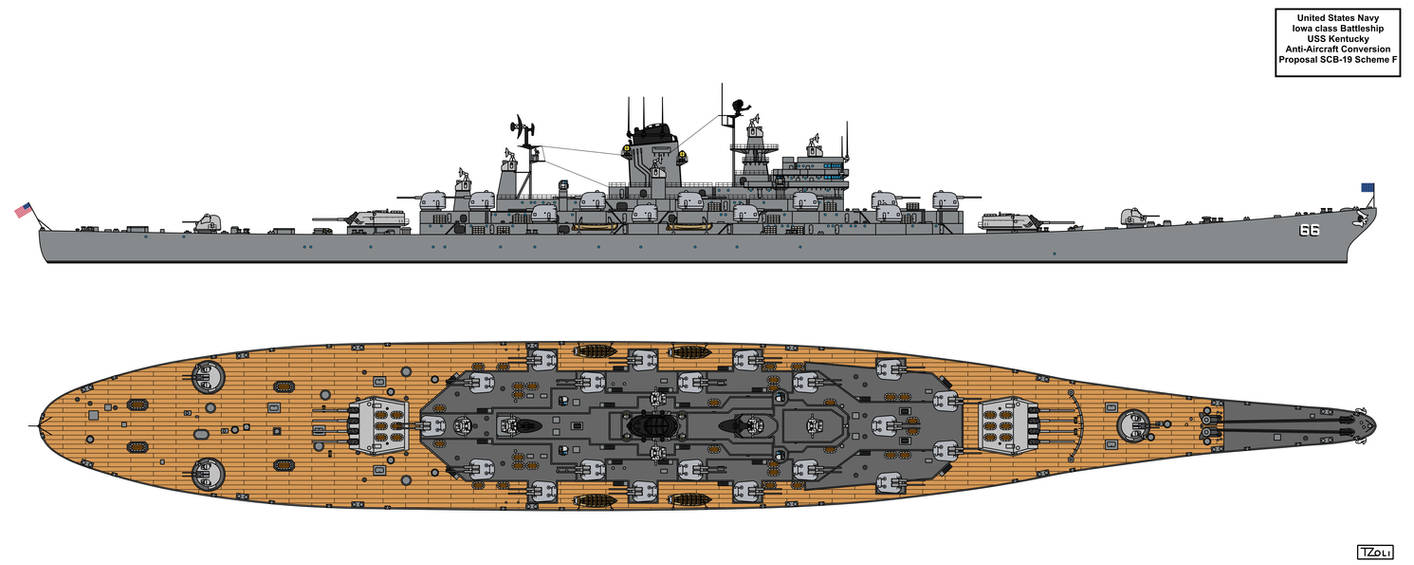
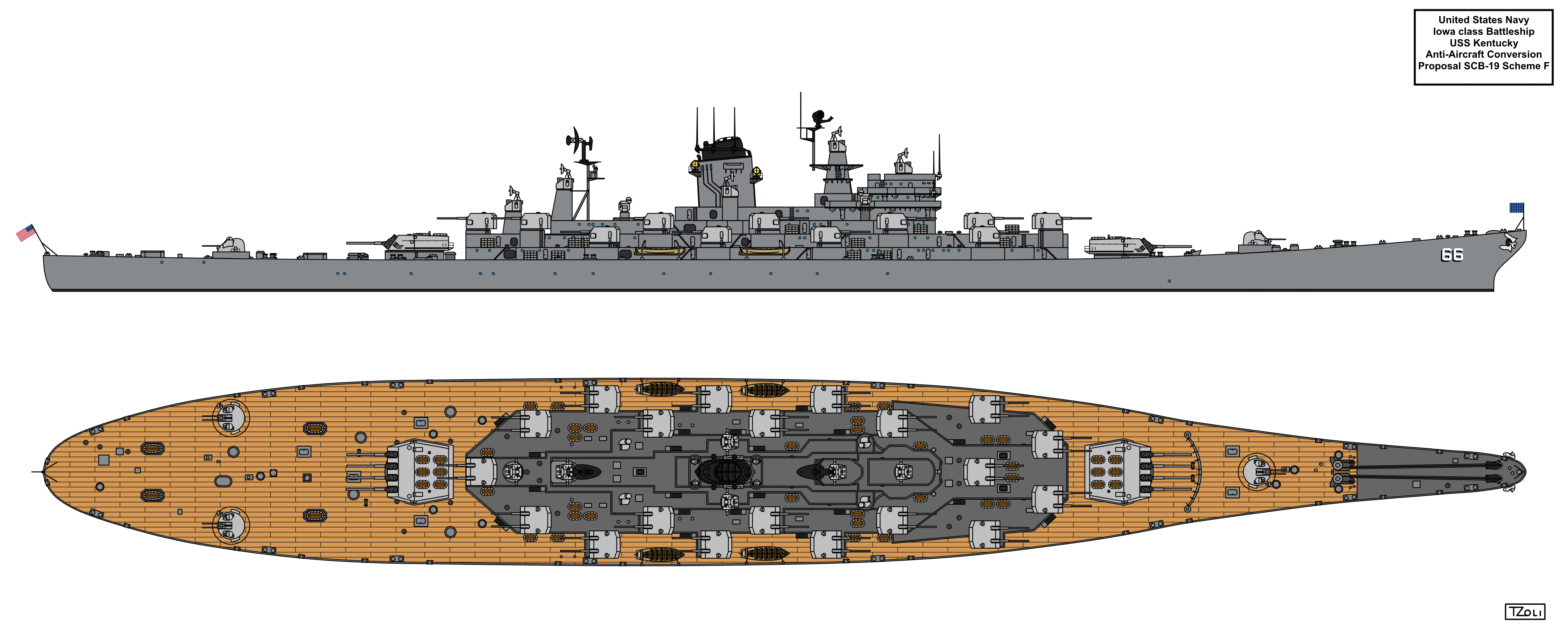
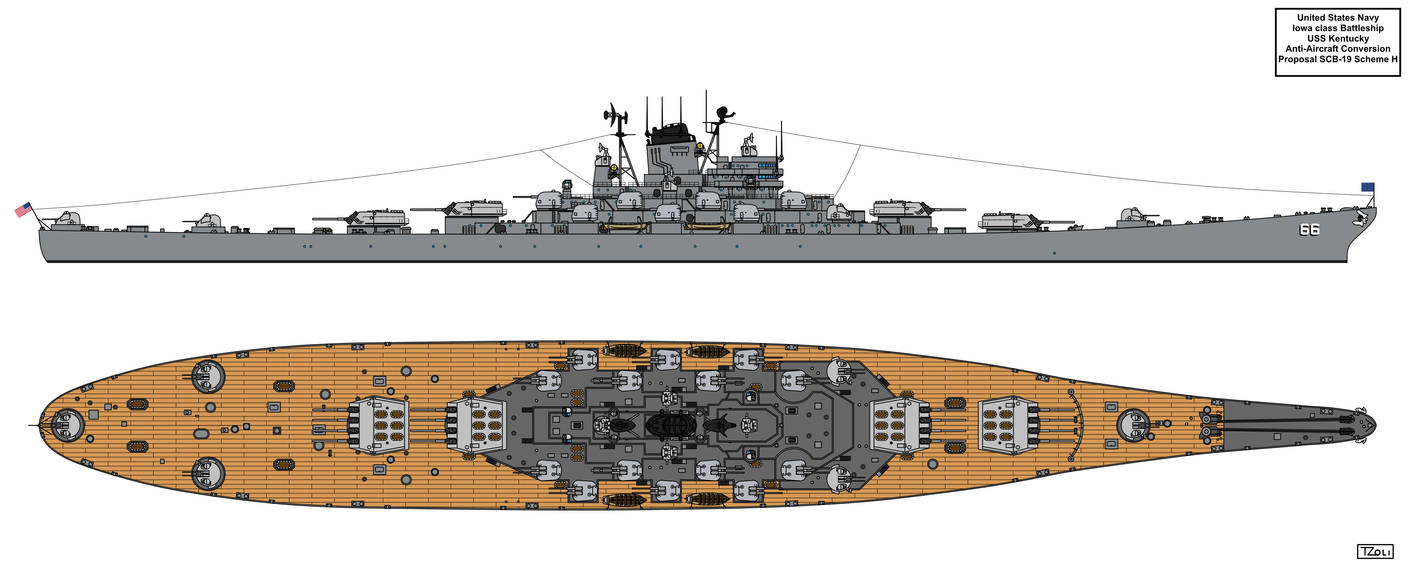
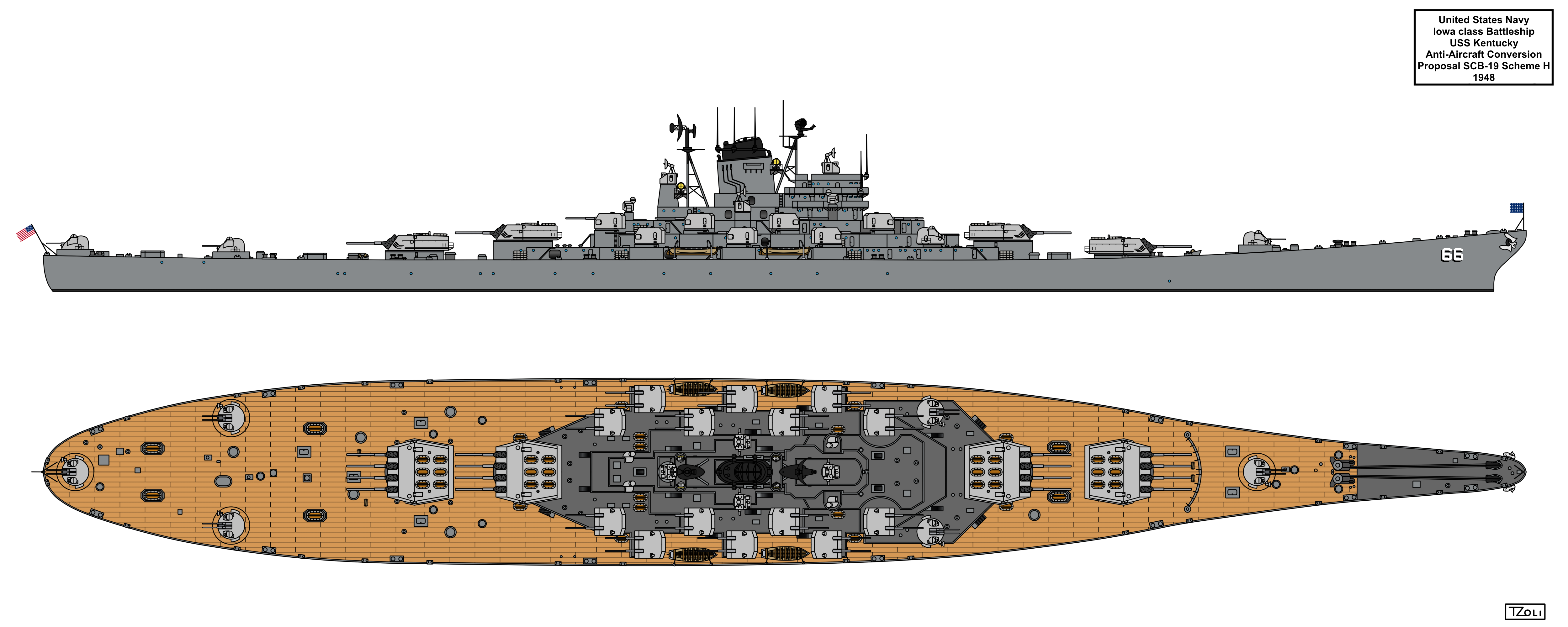
Friedman's US Battleships has this vertical of a 1959 proposal to convert an Iowa class to a missile armed battleship. Low res image attached. Was to have Talos and Polaris. The dome to aft was to be a radio star tracker for precise navigation (1960s GPS).

"Radio star" was an early term for navigation satellites. This radio star tracker has to be a Transit satellite navigation receiver antenna. Transit was closely associated with Polaris, ensuring that ships had good location data to program the Polaris flight path.Friedman's US Battleships has this vertical of a 1959 proposal to convert an Iowa class to a missile armed battleship. Low res image attached. Was to have Talos and Polaris. The dome to aft was to be a radio star tracker for precise navigation (1960s GPS).
I'm currently making this drawing and I have no idea what is that dome stated being a Radio Star Tracker Array!
Does anybody knows what this could be?

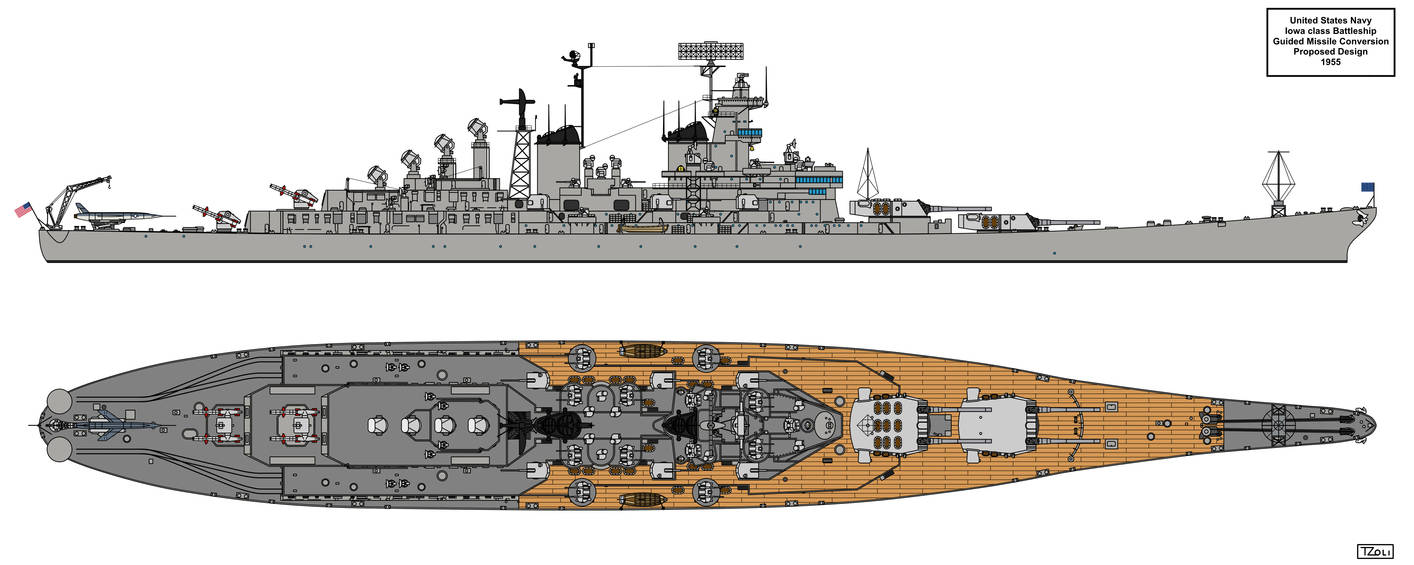
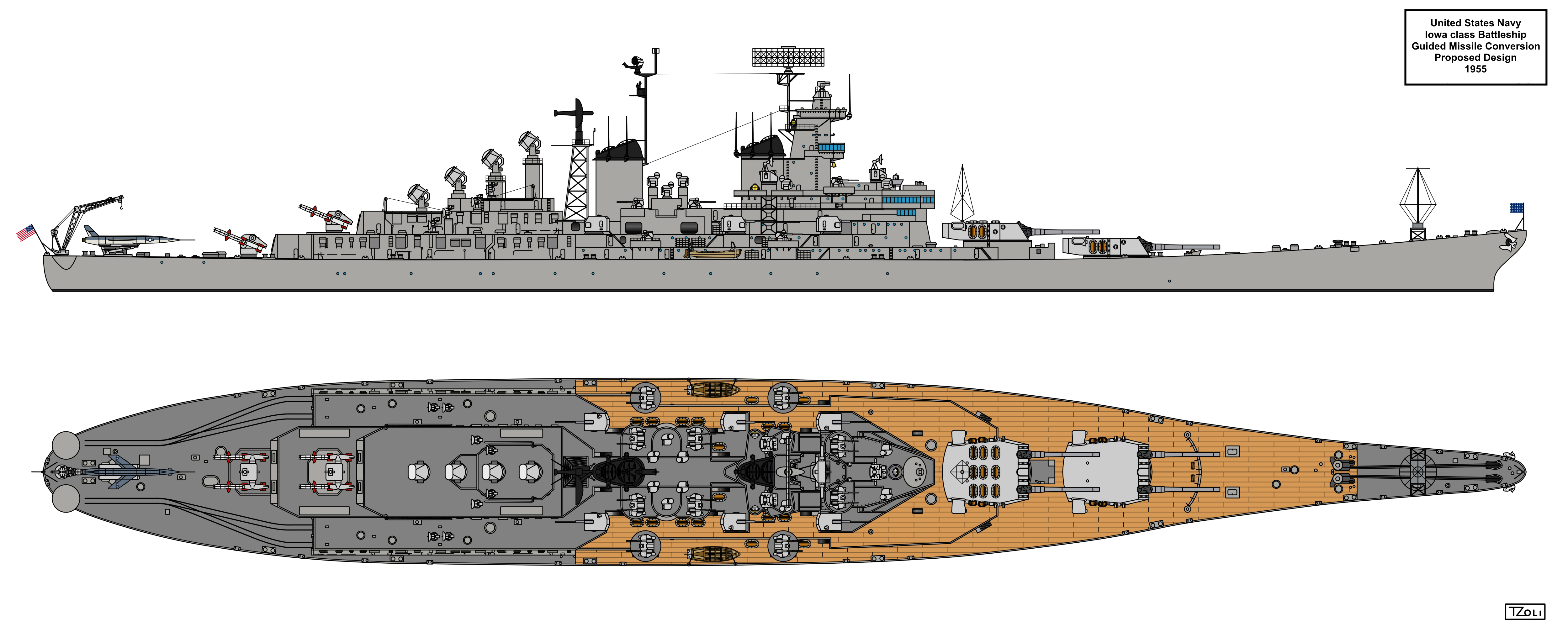
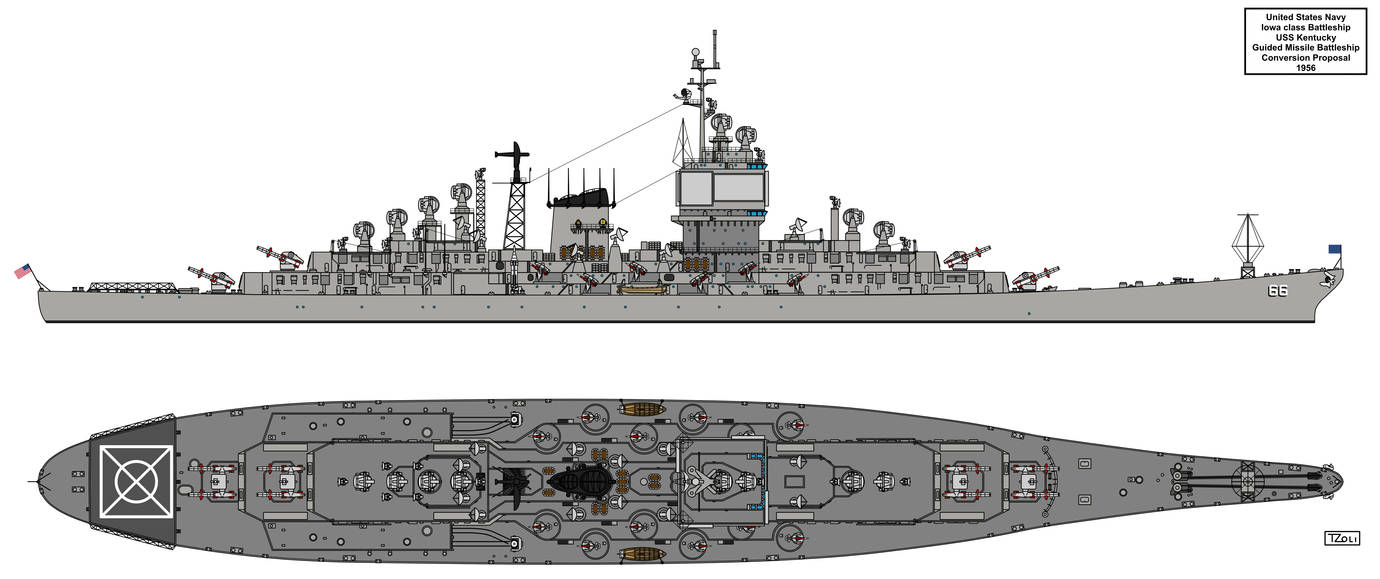
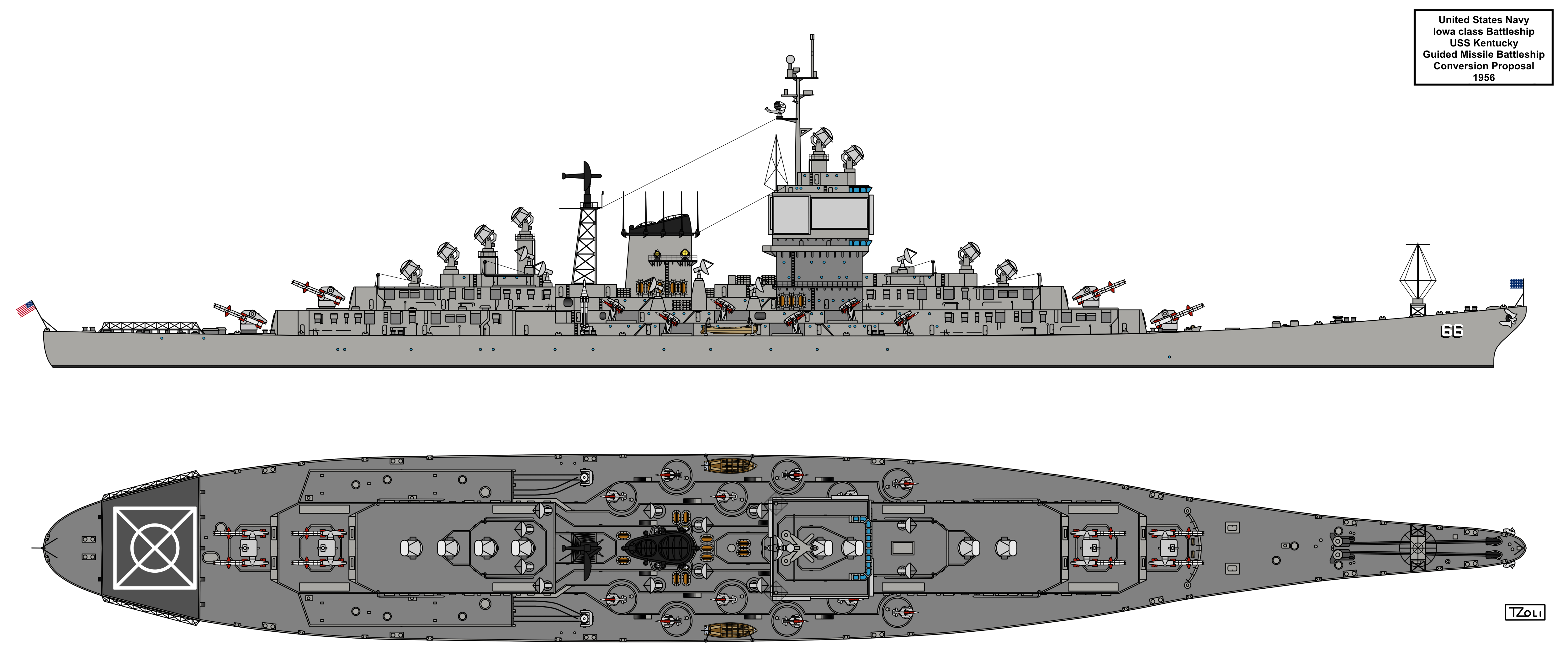
The Charles F. Adams (Berkeley Group) class designed in around 1959 (to my knowledge) carried single Tartar launchers.


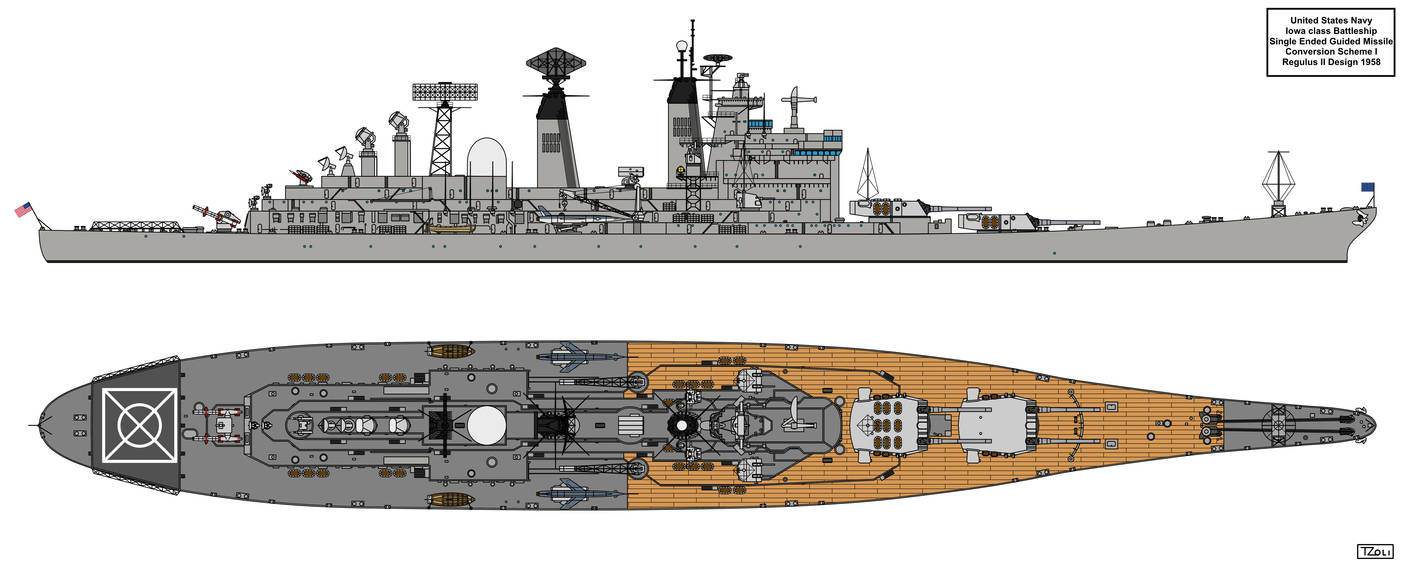
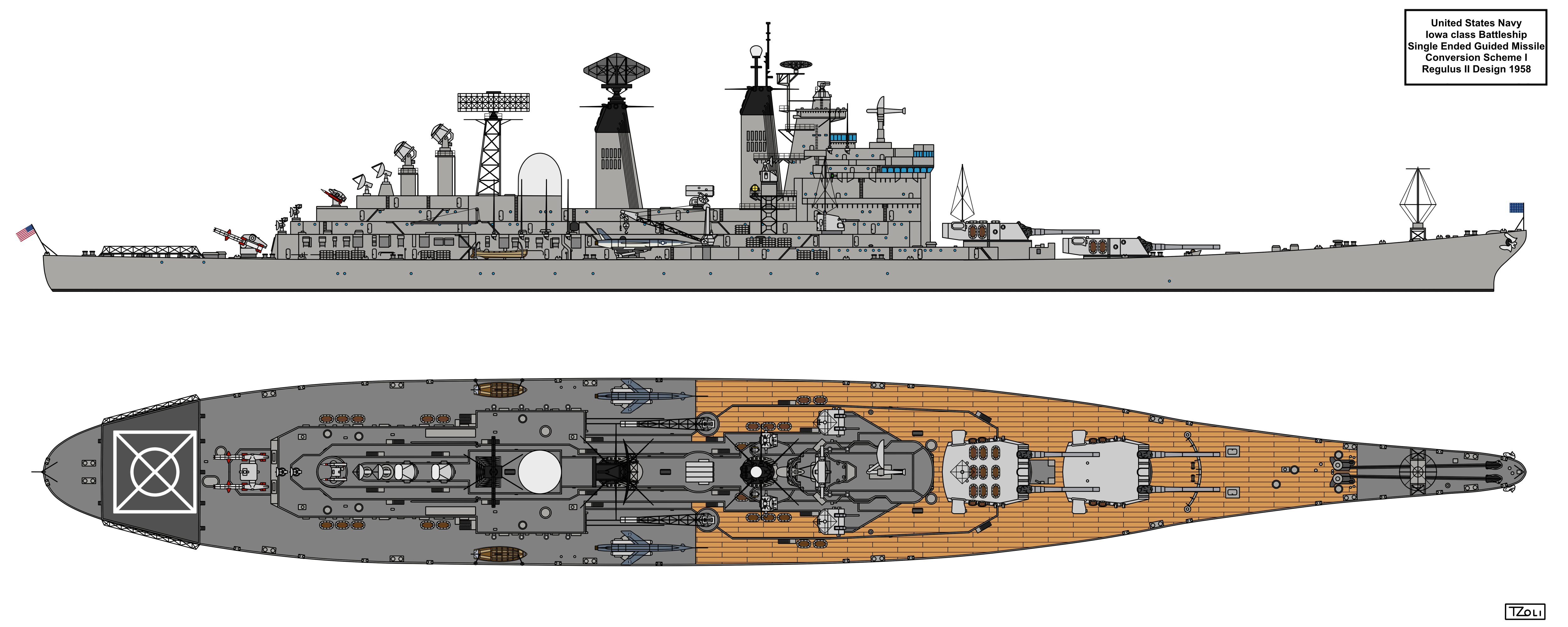
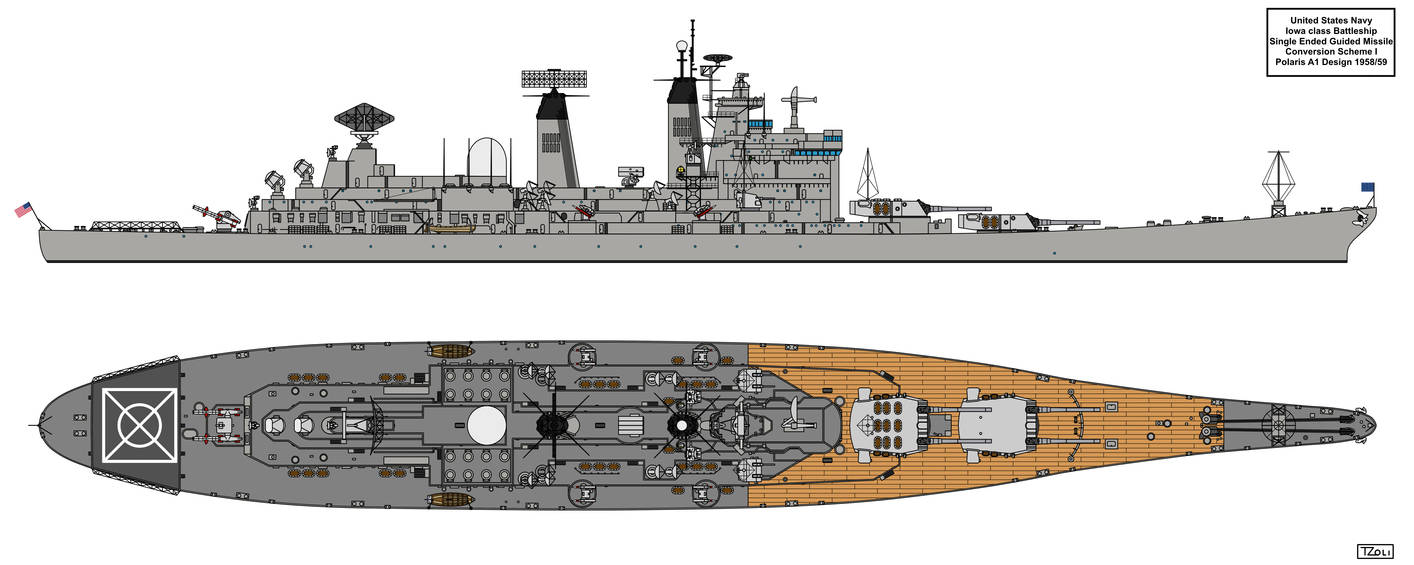
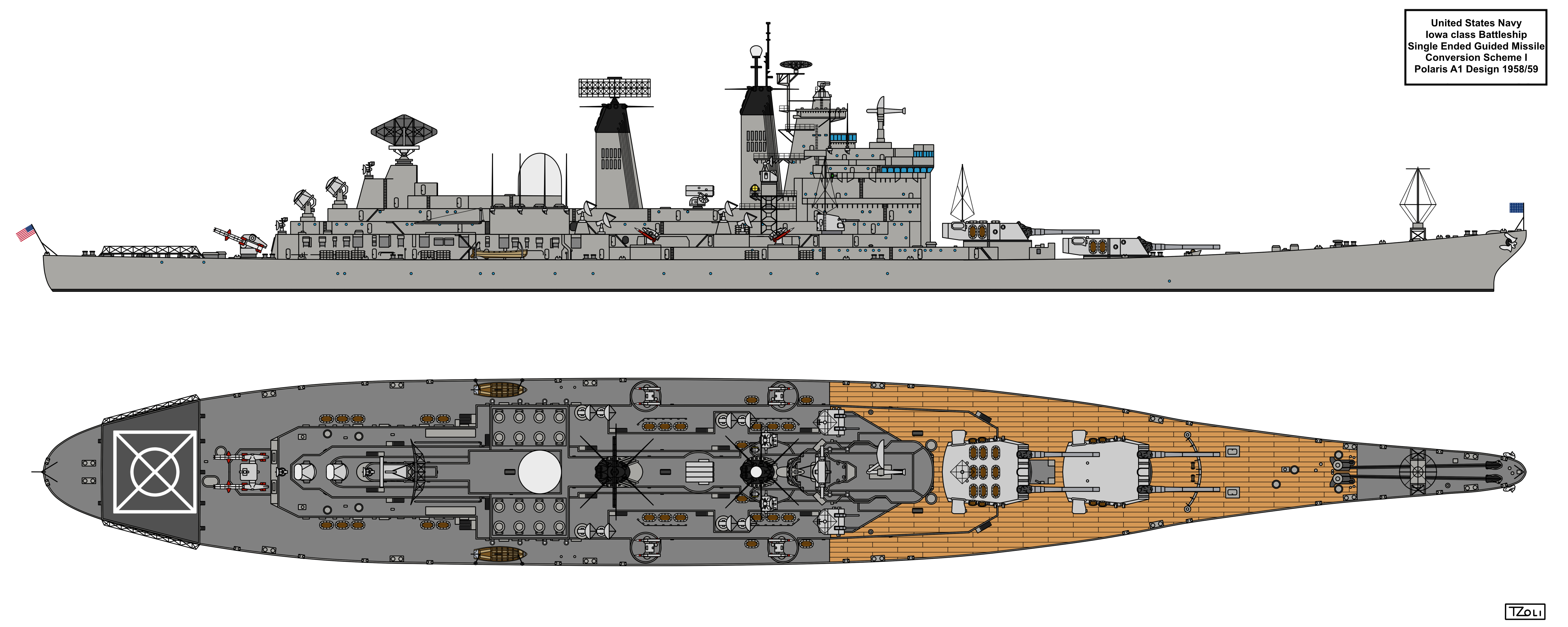
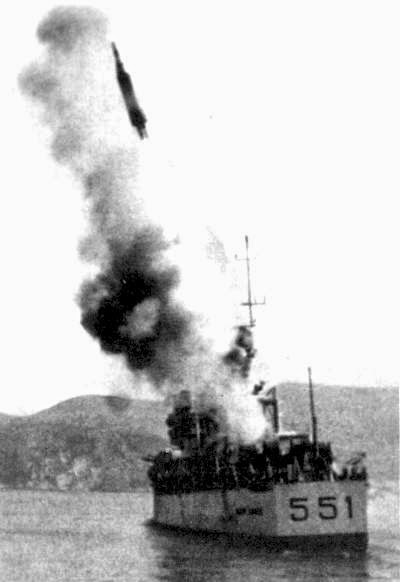
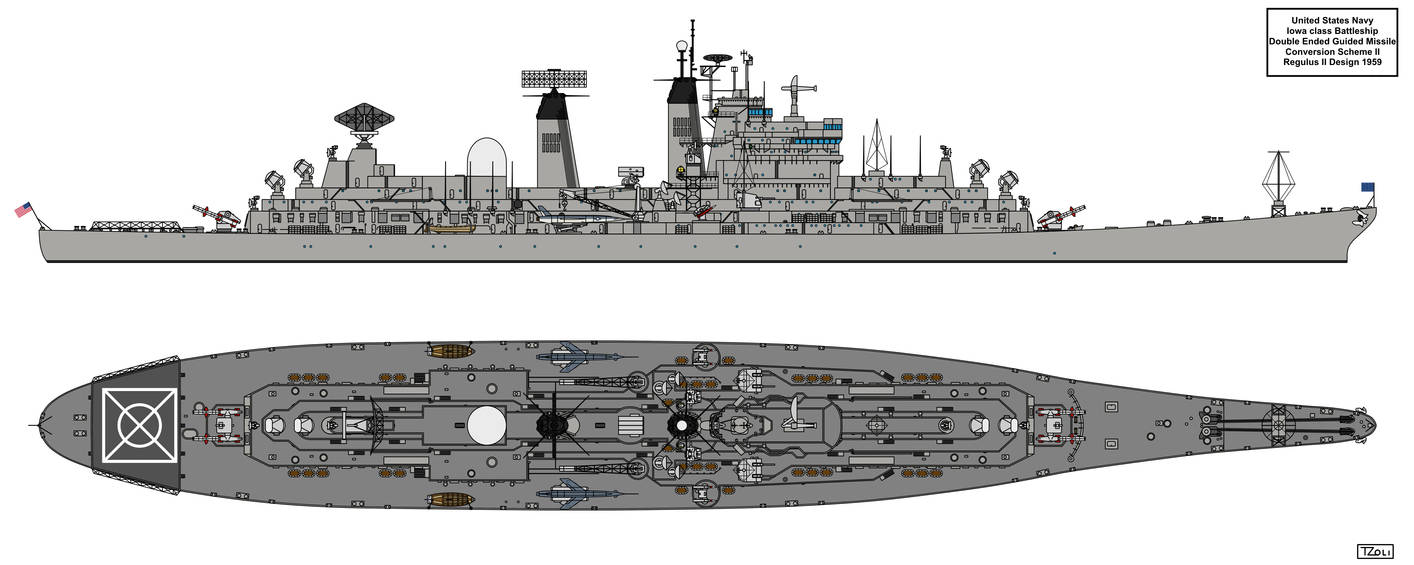
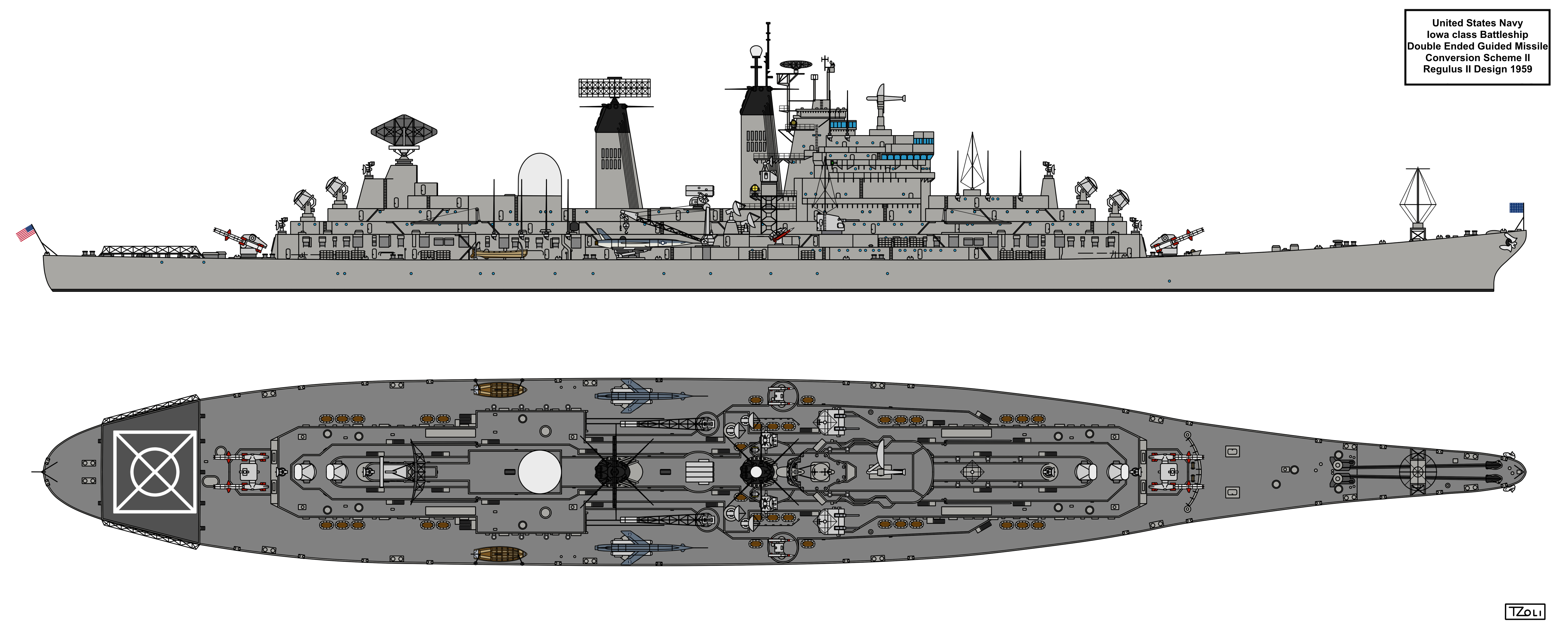
The USN saw the Regulus II as a strategic weapon (although its more realistically an intermediate-range weapon) and they also had in mind the Naval Jupiter IRBM for ships, which of course was surpassed by Polaris. I think the USN not only saw in Polaris an ideal submarine-launched missile but also a more practical replacement for the Regulus II aboard the ships planned to use it. It removed the hazards of the Regulus' liquid fuel and removed the need for assembly and loading the rail launchers etc. and Polaris was less demanding on space. So it probably seemed a no-brainer like-for-like replacement. But of course in the event the role quite sensibly reverted to submarines.I can't help but wonder if at least some proposals for Polaris on surface ships were based on an assumption that it could be a theatre weapons system, rather than a purely strategic one.
The USN saw the Regulus II as a strategic weapon (although its more realistically an intermediate-range weapon) and they also had in mind the Naval Jupiter IRBM for ships, which of course was surpassed by Polaris. I think the USN not only saw in Polaris an ideal submarine-launched missile but also a more practical replacement for the Regulus II aboard the ships planned to use it. It removed the hazards of the Regulus' liquid fuel and removed the need for assembly and loading the rail launchers etc. and Polaris was less demanding on space. So it probably seemed a no-brainer like-for-like replacement. But of course in the event the role quite sensibly reverted to submarines.
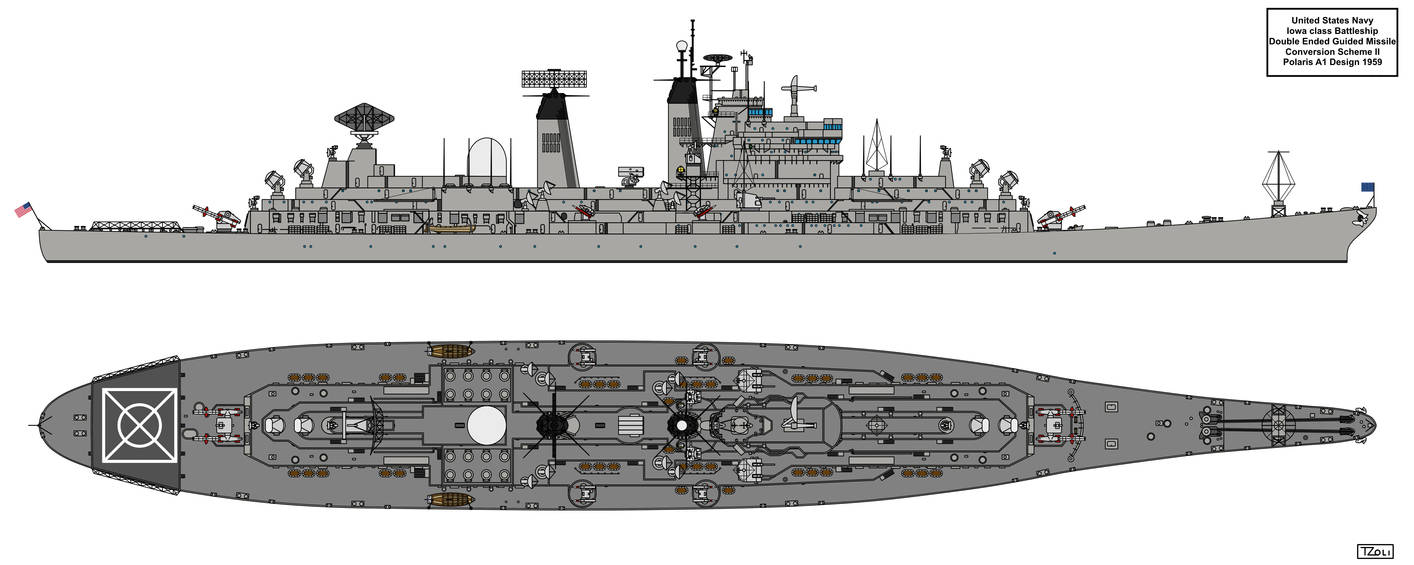
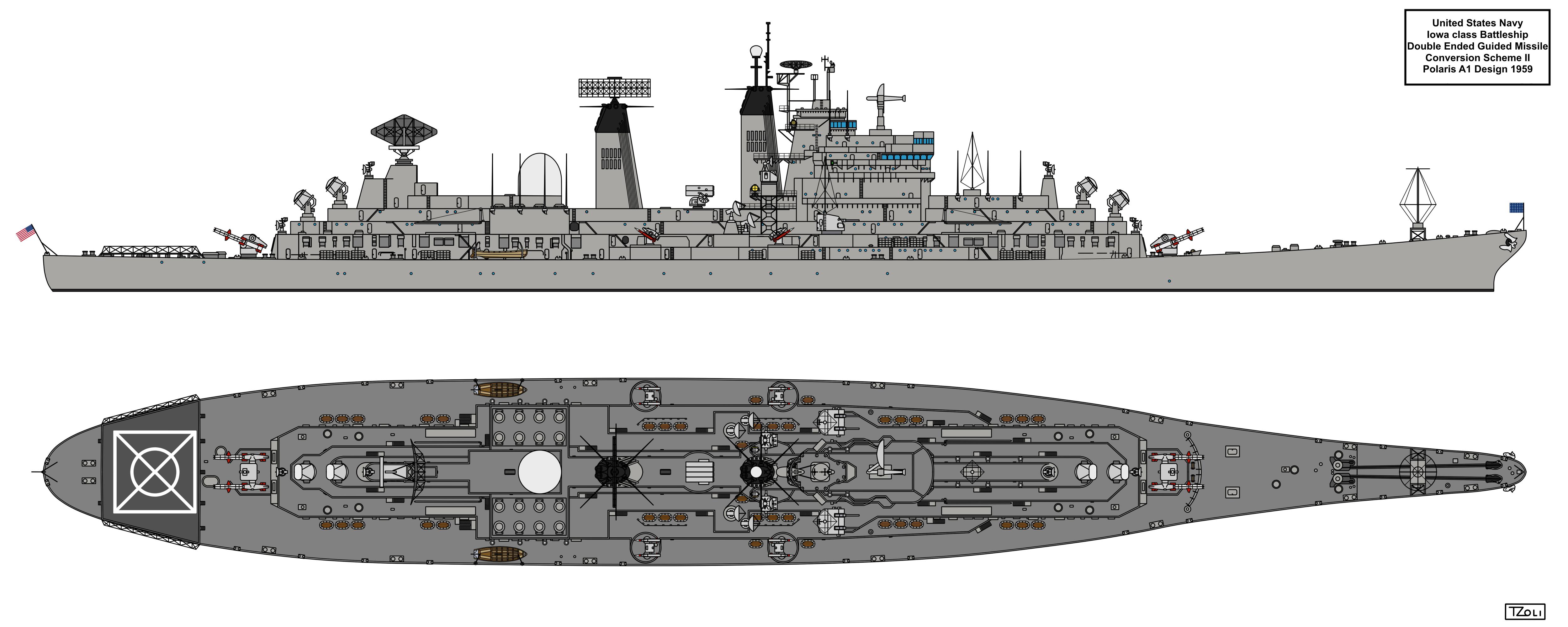
There were proposals for Polaris equipped designs in the 1950's for the USN and there was the Italian Giuseppe Garibaldi ex light cruiser then Missile cruiser which did carry them and test fired them!
So it isn't that alien from the navies to use such weapons on surface warships.


Wait, I always assume you italians never got Polaris onboard that cruiser, only the empty tubes. Looks like I was completely wrong - is the above picture a Polaris firing from the Garibaldi ?
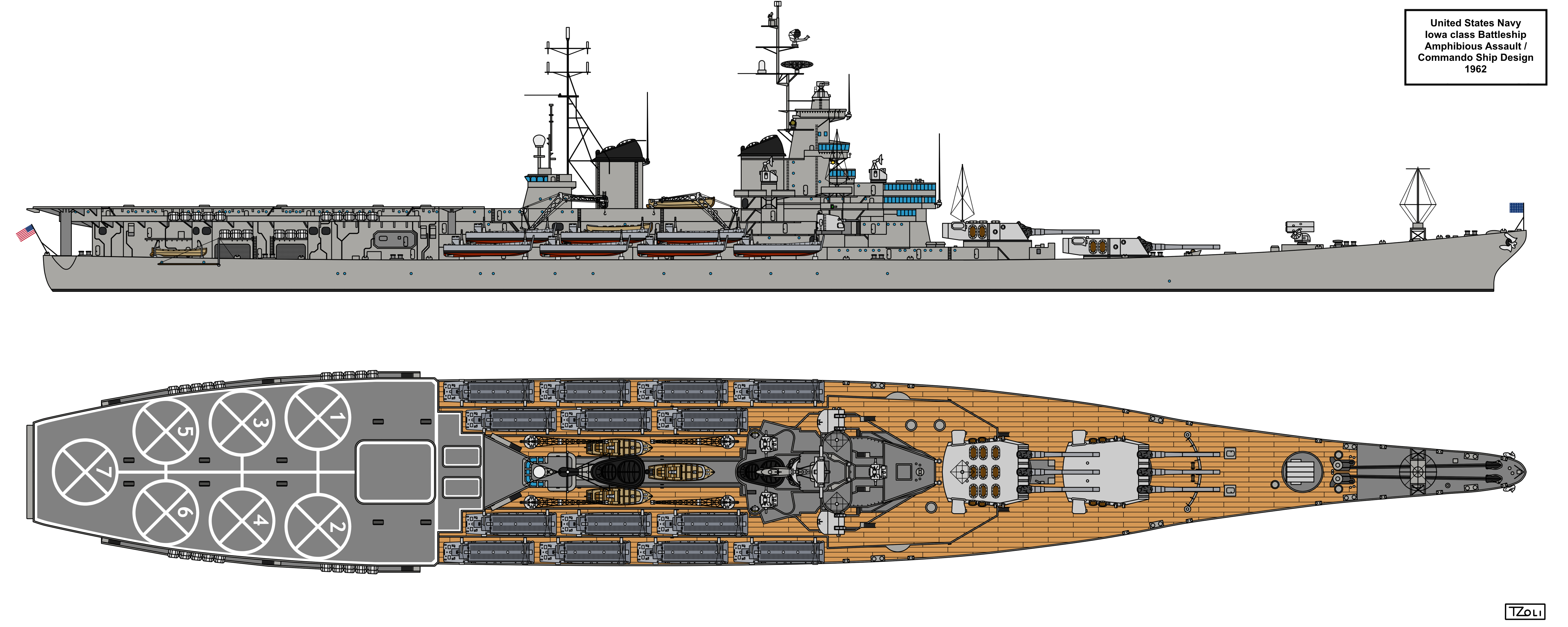
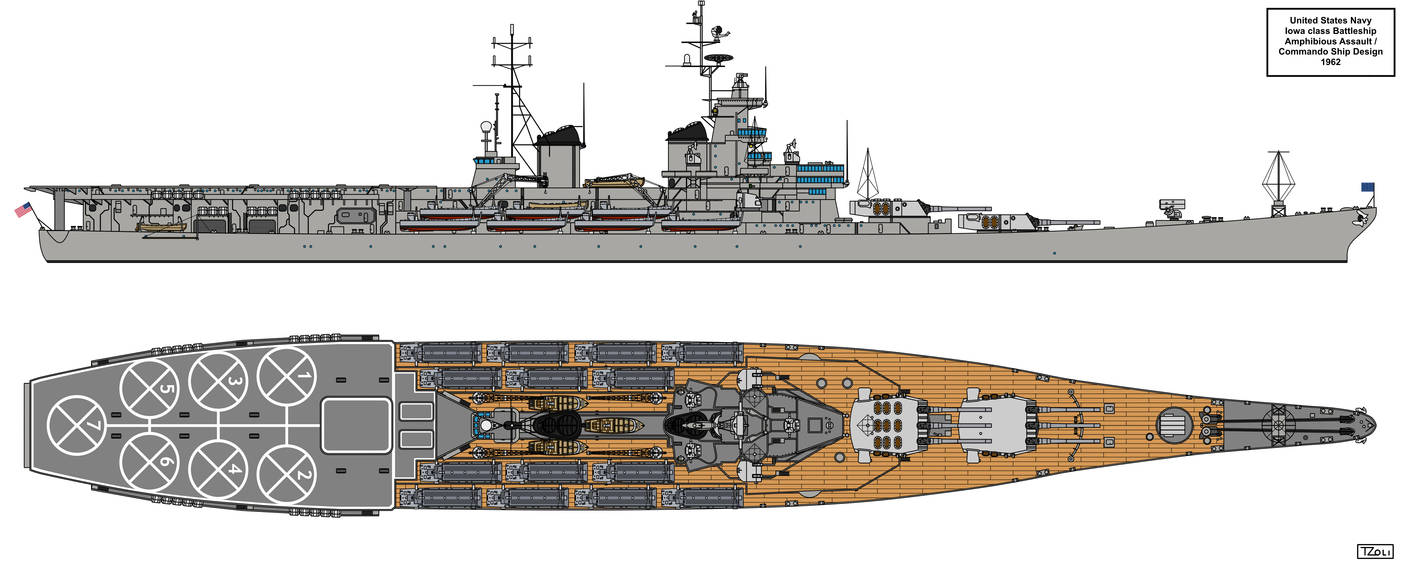
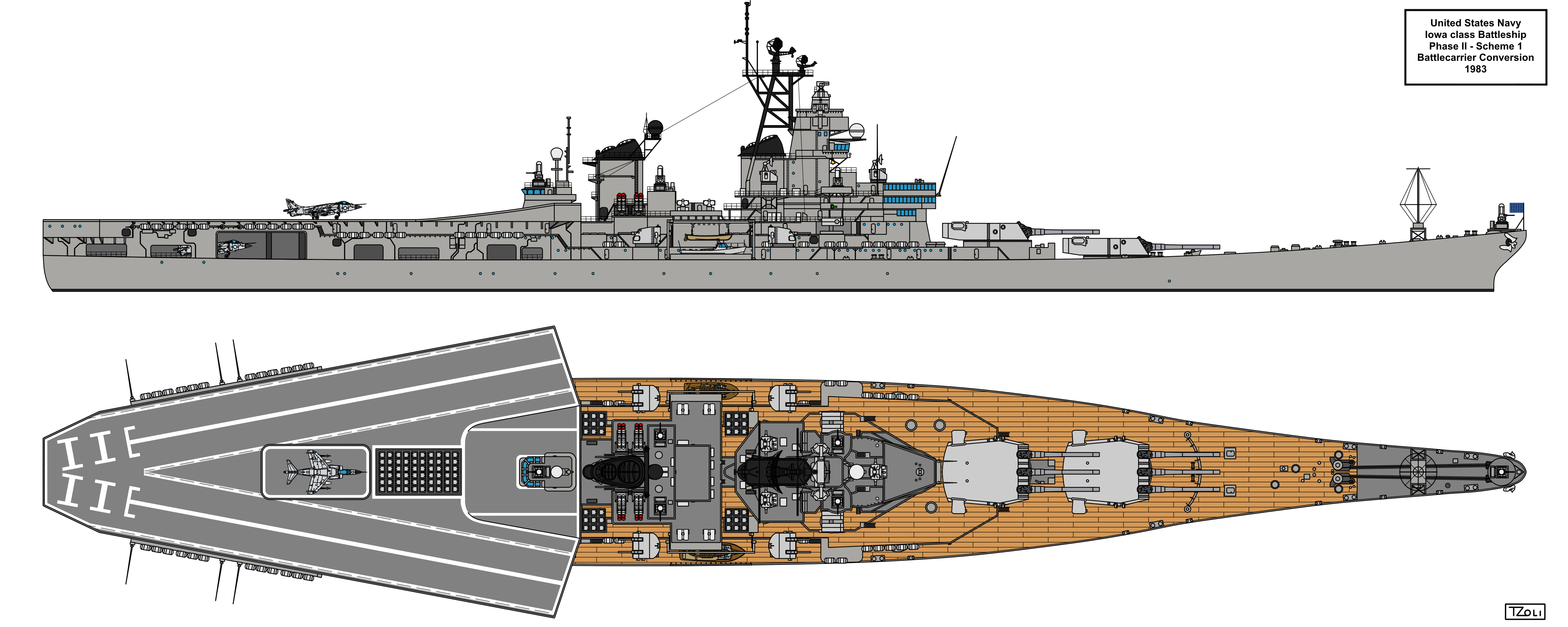
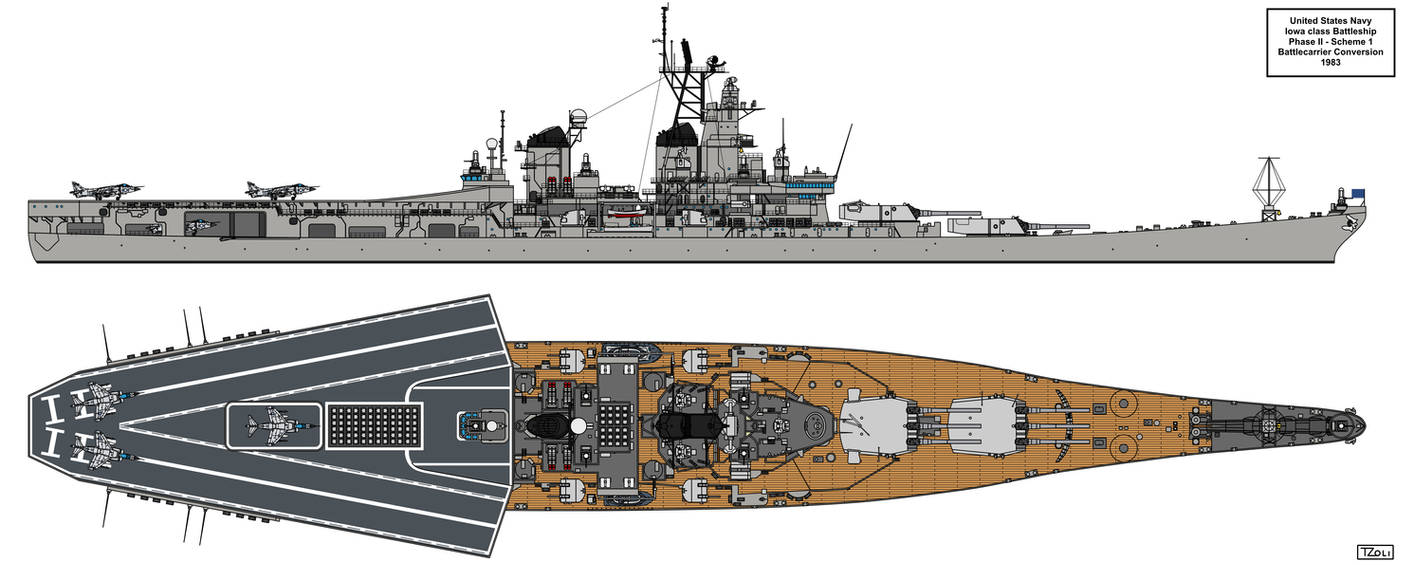
And the last so far the Phase II Scheme 1 version the Battlecarrier proposals of the Iowas:


Iowa Phase II Battlecarrier Conversion by Tzoli on DeviantArt
www.deviantart.com
424 TLAM, I'm sitting here thinking about how long it would take to fill all those cells.
The mentioned pages containing the various Phase II conversions from Gulin and Garzke's book:


